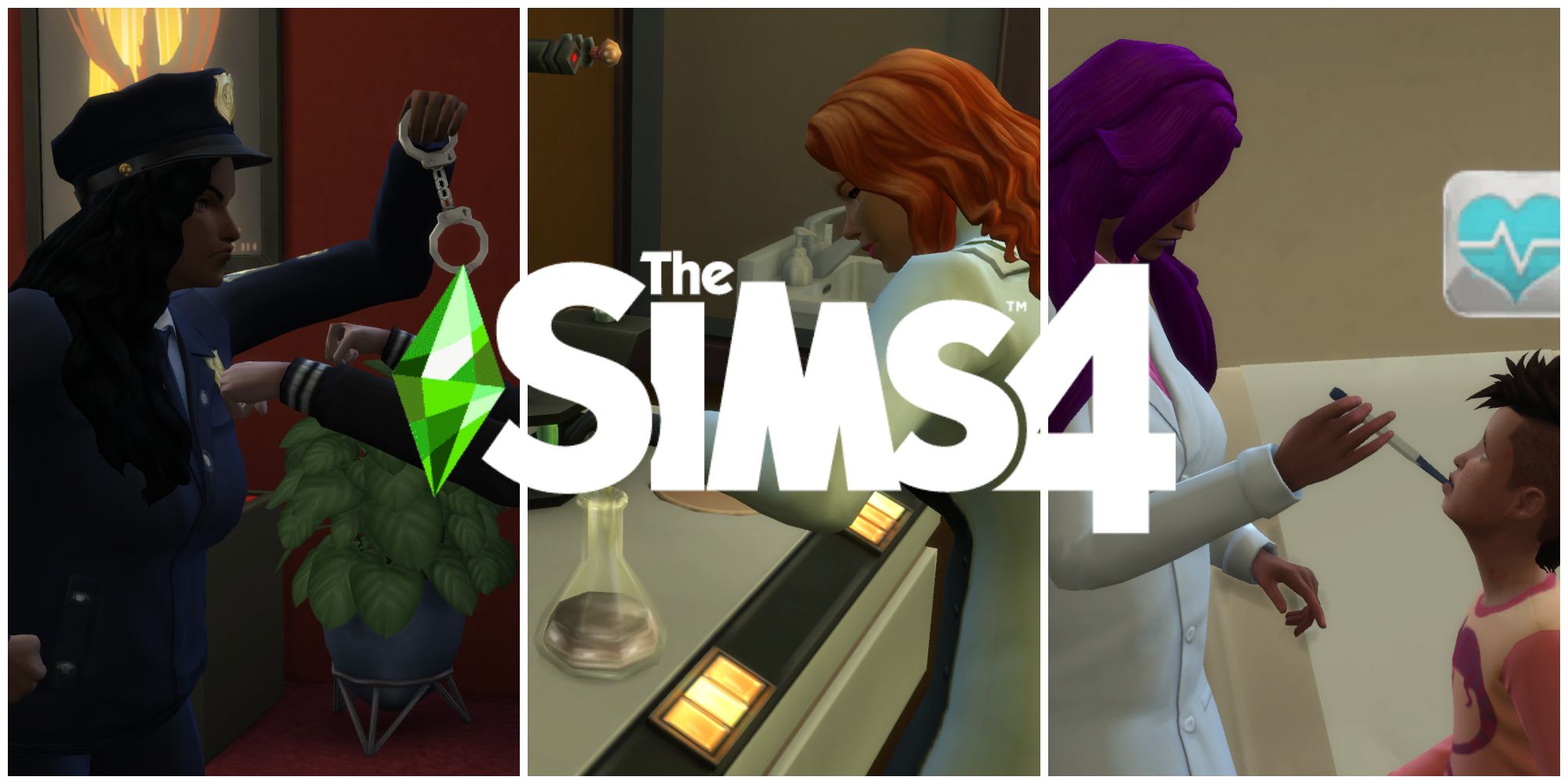Master the art of diagnosing and treating patients in The Sims 4’s active doctor career with this in-depth guide. From identifying a range of illnesses and their symptoms to guiding players through every step of patient care, get equipped with the knowledge to excel in the medical profession.

Related
The Sims 4: Best Active Careers, Ranked
The Sims 4 features several active careers, but some are more engaging than others.
Administer immunizations, prescribe medicines, and perform surgeries to ensure every Sim leaves the hospital healthier than when they arrived. With the right approach, diagnosing and treating patients becomes a smooth and rewarding experience.
How To Diagnose Patients In The Sims 4
In the early stages of the doctor career, Sims primarily handle basic tasks like admitting patients to exam beds, treating those with pre-diagnosed illnesses, and cleaning up after they leave. To place a patient in an exam bed, click on the Sim and select “Admit to Exam Bed.” Patients will have a pulsing blue and white heart above their heads.
Once they reach level four, a doctor’s role becomes more complex, requiring them to assess symptoms, conduct diagnostic tests, and determine the correct illness before administering treatment. Observing symptoms such as sneezing, rashes, or dizziness provides clues, while running tests like swabbing for samples, taking temperatures, and using the X-ray machine or treadmill test through medical referrals helps narrow down the diagnosis.
In order to observe all idle animations and symptomatic behaviors, it is best for players to play the game at normal speed. Some symptoms may be missed or incorrectly assessed at higher speeds.
How To Run Diagnostic Tests In The Sims 4
Running diagnostic tests is essential for pinpointing a patient’s illness beyond just observing their symptoms. Click on the patient and locate the “Examine Patient” pie menu. From there, choose between various tests, including checking ears and eyes, discussing general health, taking temperatures, swabbing for samples, and scanning the body.
Swabbing patients for a DNA sample and analyzing it with the chemical analyzer is one of the quickest ways to gather useful information about a Sim’s condition. After conducting multiple tests, doctors can make a Weak Diagnosis, which presents a broad list of possible illnesses. To narrow down the options further, medical referral tests provide additional insight, allowing for a more accurate diagnosis.
How To Run Medical Referral Tests In The Sims 4
Medical referral tests provide a deeper level of analysis when standard diagnostic tests don’t offer enough clarity. By selecting the “Medical Referral” pie menu on the patient, doctors can choose to run either an X-ray scan or a treadmill test. Since both of these tests are more involved and take up time, they should only be used when a Sim still has a weak diagnosis chance after performing all available diagnostic tests, analyzing a DNA sample, and observing their symptoms.
When used strategically, referral tests can push a weak diagnosis into a Compelling Diagnosis, significantly narrowing down the list of possible illnesses. This makes it much easier to confidently diagnose and treat the patient without risking a misdiagnosis. To diagnose the patient, click on the patient Sim, select “Compelling Diagnosis,” and choose the correct illness based on the known information.

Related
The Sims 4: 25 Best Health & Wellness Mods, Ranked
Health & Wellness mods for The Sims 4 give Sims a treasure trove of health problems and potential cures to shake up a stale playthrough.
All Illnesses in The Sims 4
The table below outlines all the illnesses that patients can develop from The Sims 4: Get To Work, including their common symptoms and any associated rashes. While rashes can help identify an illness, they don’t always appear, so relying solely on them can sometimes lead to misdiagnosis. To improve accuracy, players should closely observe a patient’s idle animations, such as sneezing, coughing, or experiencing dizzy spells, as these provide valuable clues about their condition.
Thought bubbles also offer hints, with icons like fire, a medication bottle, a thermometer, tissues, a stethoscope, or pills indicating potential symptoms. By combining these visual cues with diagnostic tests, players can confidently determine the correct illness and provide the right treatment.
|
Illness Name |
Symptoms/Behaviors |
Physical Presentation |
|---|---|---|
|
Bloaty Head |
|
Orange and Green Spots |
|
Burning Belly |
|
No Rash |
|
Gas-And-Giggles |
|
Tiger-Stripe Rash |
|
Itchy Plumbob |
Orange and Green Spots OR Tiger-Stripe Rash |
|
|
Llama Flu |
|
Orange and Green Spots |
|
Starry Eyes |
|
Swirly Rash |
|
Sweaty Shivers |
|
Orange and Green Spots |
|
The Triple Threat |
|
Orange and Green Spots OR Tiger-Stripe Rash OR Swirly Rash |
How To Treat Illnesses In The Sims 4
Once a doctor has diagnosed a patient, the Sim will have a pulsing red heart above their heads. The next step is administering the correct treatment through the “Treat Patient” menu. Sims can be cured in one of three ways: an immunization shot, liquid medication, or surgery. Immunizations and medications work instantly, but illnesses requiring surgery will prompt the doctor to escort the patient to the surgery machine for a more advanced procedure.
If a doctor misdiagnoses and mistreats a patient, the Sim will briefly pass out before leaving the hospital still sick, which can negatively impact job performance. Successfully treating patients, however, can boost work performance and help doctors advance in their careers more quickly.
|
Illness |
Treatment |
|---|---|
|
Bloaty Head |
Immunization |
|
Burning Belly |
Surgery |
|
Gas-And-Giggles |
Medication |
|
Itchy Plumbob |
Surgery |
|
Llama Flu |
Immunization |
|
Starry Eyes |
Medication |
|
Sweaty Shivers |
Immunization |
|
Triple Threat |
Surgery |












Leave a Reply